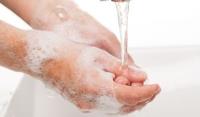 Add My Company
Add My Company
Sign In
Handwashing: Simple But Effective
19-10-2022

We probably all remember being taught, during our early years in school, about the importance of proper handwashing. It’s still good advice but, as adults, with no teachers here to inspect and remind us, it becomes all too easy to let those good habits slide. We can find ourselves becoming casual about the subject of hand hygiene; accepting the wisdom of it without really thinking much about it or putting the theory into practice.
In 2020, the Covid-19 pandemic put a renewed spotlight on hand hygiene. Suddenly, posters appeared in washrooms and corridors offering us guidance on how to wash effectively. TV and social media channels began featuring informative adverts advising us to wash for a minimum of 20 seconds – about the same time as it takes to sing “Happy Birthday” twice over.
These and other reminders were helpful, but as the peak of the pandemic passed and people returned to work and public places, so that casualness returned.
That’s a shame, of course, because poor handwashing regimes are associated with the transmission of all manner of unpleasant diseases, from the common cold to life-threatening infections such as MRSA. So, since this week coincides with Global Handwashing Day (15 October 2022), we thought we’d take the opportunity to reiterate a few of those simple but important lessons that we first learned in our very early years.
Soap and Water are Enough
The Covid-19 pandemic saw the introduction of hand sanitising gels in shops, offices, restaurants and just about every other conceivable public space. And they serve a useful purpose; ensuring that people can minimise infection risks even in places where it’s impossible to have running water. However, when soap and water are available, they’re generally recommended as the better choice.
The reason is that the action of handwashing itself helps to remove any dirt or grease that might be adhering to the hands, and which might be ‘sheltering’ germs. Applying an alcohol-based gel over the top of that dirt may kill whatever is lying on it, but not necessarily whatever is underneath.
By contrast, proper handwashing – i.e. for the recommended 20 seconds and using soap – should remove the dirt and leave microorganisms with far fewer places to hide. The soap reduces the surface tension of the water, making it better able to reach all surfaces of the skin, and thus to dislodge potentially harmful bacteria and virus-containing particles.
Soap will also actively dissolve fats. This is important because many viruses, including Coronaviruses, survive beneath a fatty lipid membrane, and if this membrane breaks down, so the virus inside it collapses and becomes essentially inert. Soap really does ‘kill germs.’
Consequently, although the higher cost and pungent smells of chemical-based sanitisers might suggest a more aggressive agent with a more powerful effect, the truth is that soap and water are enough. In fact, they’re usually preferable.
Drying is Part of the Process
Water is a great medium for supporting life, and consequently, many bacteria find it much easier to thrive on wet or damp hands than on dry ones. The obvious conclusion from this is that drying is an essential part of a handwashing regime. The debate about whether hand dryers or paper towels are the better choice will doubtless rage on, but what really matters is that the hands are left dry at the end of the process.
Availability Matters
Knowing the principles of proper handwashing is all very well, but it doesn’t count for much if there aren’t the facilities to perform it. Anyone who’s responsible for encouraging hygiene or managing the facilities within a building should therefore ensure that washrooms are:
• Sensibly and conveniently situated
• Clearly signed
• Well lit
• Accessible to all users
• Properly equipped with hot water, soap and hand-drying facilities
• Kept well-supplied, with all dispensers regularly topped up
• Regularly inspected and maintained
More Information
The Global Handwashing website provides a wealth of useful information and resources to help organisations promote the importance of better hand hygiene. It offers social media kits, graphics, helpful links and fact sheets with interesting, sometimes alarming statistics. For example:
• Handwashing with soap is essential to preventing infections and reducing antimicrobial resistance.
• Handwashing with soap can reduce acute respiratory infections by up to 20%.
• Handwashing with soap plays an important role in reducing the transmission of outbreak-related pathogens such as cholera, Ebola, shigellosis, SARS, hepatitis E, and COVID-19.
• Handwashing can prevent 1 in 3 cases of diarrhoea in children, which in turn leads to
• better physical and cognitive development and increased nutritional status.
• Handwashing stations are often not designed for people with disabilities, leaving many unable to wash their hands when needed.
Dudley Industries has decades of experience as a specialist manufacturer of washroom equipment. It can therefore offer expert advice on washroom design, choice of dispensers and other equipment, and considerations when designing for special user groups, such as vulnerable people and those with dementia.
For more information on Handwashing: Simple But Effective talk to Dudley Industries Ltd
Enquire Now
List your company on FindTheNeedle.
